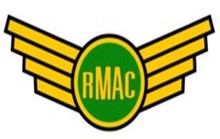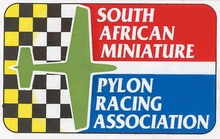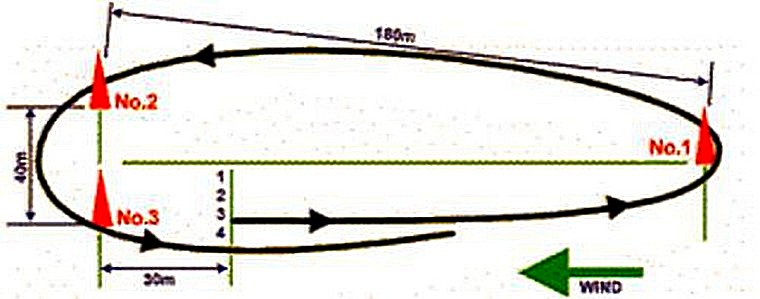








Rand Model Aeronautical Club Pylon Racing 9 February 2019By Matthys Botha. Photos by Willie Bodenstein    Generally, four high speed model aircraft will take off at 1-second intervals to allow their pilots to compete against each other and the clock. Every pilot has a helper/caller who releases the model at the start and guides the pilot through a race, giving him an indication of when to turn based on optical signals from the course officials, and informs him of the progress of other pilots in the race. On the starting block. The lights that indicates when each contestant may start and pylon one is in the background. Some of Saturday's pilots and caller. During a heat each pilot is assigned a timekeeper and a "flagman" at pylon 1 who signals by means of electronically controlled coloured lights to his caller when the aircraft is level with the pylon and may turn. Pylon's 2 & 3 are judged by the Pilot and his caller. With six seconds left on the clock pilots are getting ready to launch at intervals indicated by the lights at pylon one. (Note the safety helmets worn by all contestants and others in the active flying area.) A different method of launch by a bungee cord is used in the FPV Electric discipline. Rounding a pylon Fuelling, adjusting and general repairs between heats. Discussion tactics Landing after the completion of a heat. Retrieving aircraft is all part of the day's fun. Speeds of well over 300km/h are quite common in some of the classes. Judges (flagmen) are situated on the course, to enable them to view model aircraft that "cut" the course. Some of the aircraft that were entered on Saturday's race. Pylon racing model aircraft are purpose built, and construction materials generally include balsa wood, polystyrene foam, plywood, fibreglass, and other composite materials like carbon-fibre and Kevlar. There are various classes of competition, catering for every skill level. Surface finishes are super smooth and retractable undercarriages will sometimes be used. The wings are extremely strong; to withstand the high gravity forces induced on the airframe during the turns. 6,5ccm internal combustion engines power the pylon racing models, and the high-performance engines may turn up to 30 000 r.p.m. Models in the various classes are built to certain specifications that govern the wing and fuselage area and the maximum and minimum weight. The judges. Note the safety net. The 3 classes of racing currently flown in South Africa are; Standard Quickie 500 which is basically an entry level class with Standard sport 40 size engines. Hot Quickie 500. These aircraft use the same airframe but with a specially prepared racing engines. This is a fast and closely contested class. Q40/F3R These aircraft are very fast and sleek and conform to FAI rules. It is currently the premier class in SA. As long as boys have toys there will always be speculation of whose toy is the fastest and pylon racing is an exciting, thrilling and a fun way to show your skill and the speed of your toy. Despite the sophistication of the equipment starting out will not break your bank. Camaraderie and good sportsmanship are hallmarks of model pylon racing enthusiasts. |
                    |
 |
 |

Copyright © Pilot's Post PTY Ltd
The information, views and opinions by the authors contributing to Pilot's Post are not necessarily those of the editor or other writers at Pilot's Post.